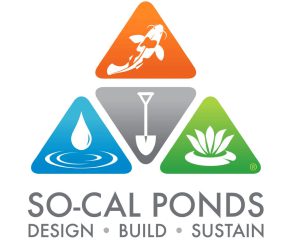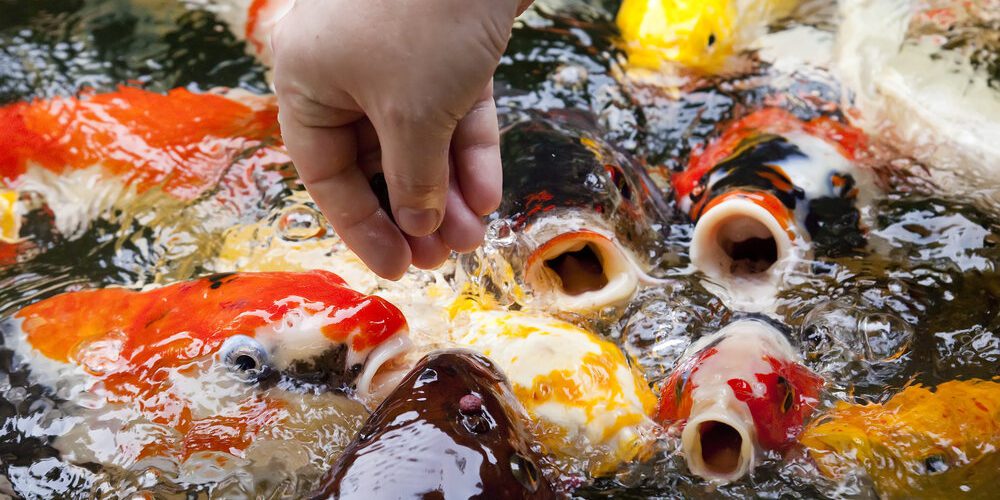- Home
- About Us
- Landscape
- Ponds & Water Features
- Portfolio
- Blogs
- Resources
- Contact Us
close


As the seasons change, don’t forget to change your fishes’ diet accordingly!
Fall has FALLEN! Some of you may be ecstatic that this cozy season is upon us! And maybe some of you (who probably just haven’t smelt a pumpkin spice candle this season yet) may be dreading this time of year. Either way there are quite a few different responsibilities we all must take on now that this season is upon us. For pond owners, especially those with fish, must prepare for the changing of the season! In this article, we will talk about how Fall and Winter will affect your fishes’ diet.
Now is the time to pay attention to the amount of food you feed you fish. Their diet now plays a significant part in their overall health through Winter and Spring. Due to the fluctuating temperatures in Winter adding to their stress level, fish are far less hardy come Spring. This makes them more susceptible to disease and illness!
Pro Tip: Keep a thermometer on hand! You’ll need to gauge the water temperature so you know when to switch fish food and when to stop feeding them entirely!
Once the water temperature lowers to 70°F, your fishes’ regular food should be mixed with a wheat germ base that is lower in protein. As water temperatures fall, the metabolism of koi and other fish slows, and their ability to resist disease decreases. To compensate, at around 70°F, begin mixing their diet with an easier-to-digest, wheat germ formula.
At around 55°F, the fish’s metabolism starts to slow, reducing its intake requirements. You should now switch to a wheat germ formula completely. These foods offer high nutrition, are fortified with vitamins and minerals to help boost the immune system and help reduce fish waste. Plus, proteins are much harder to digest than other nutrients.
The wheat germ diet can continue to be fed all winter if the water temperature doesn’t get below 50°F. Once the water temperatures go below 50°F, it’s time to stop feeding until spring. At this time the fish’s metabolism is too slow to utilize food.
REMEMBER: Do not feed if there is any chance of the temperatures dropping below 50°F within a few days. Fish are not capable of proper digestion in cold water and the food can decay in their system, sending bacteria into the bloodstream and killing the fish.
It is also important to remember; the lowering temperatures are not just slowing your fish’s metabolism, the activity of the bacteria in your filter will be slowing as well. The cold temperature will cease bacteria reproduction, and they will either go dormant or die off. Because of this, it is important to regularly test the pond’s water for ammonia and nitrites. You do not want these to show up!
*nitrite levels over 0.25 ppm are deadly to fish.
*ammonia is extremely toxic to fish. Keep below 1ppm.